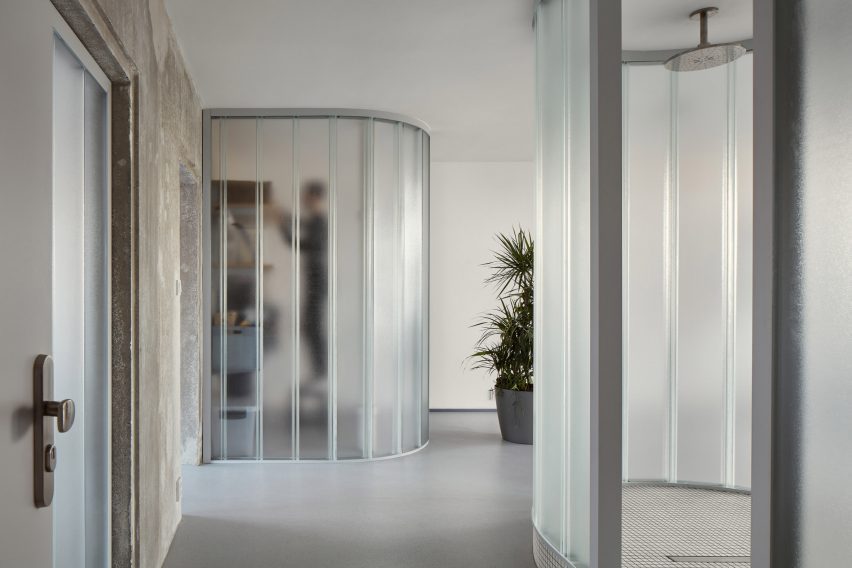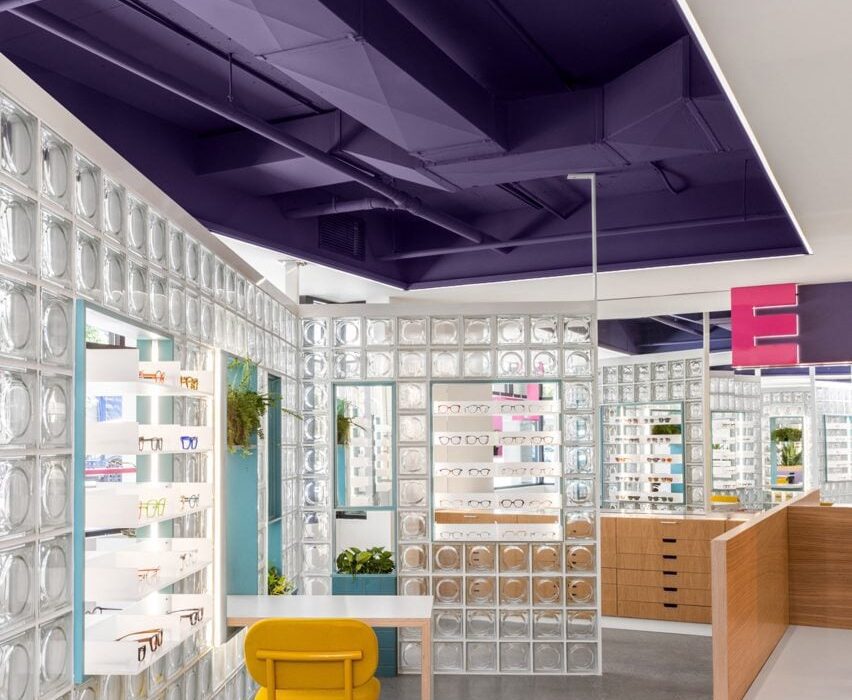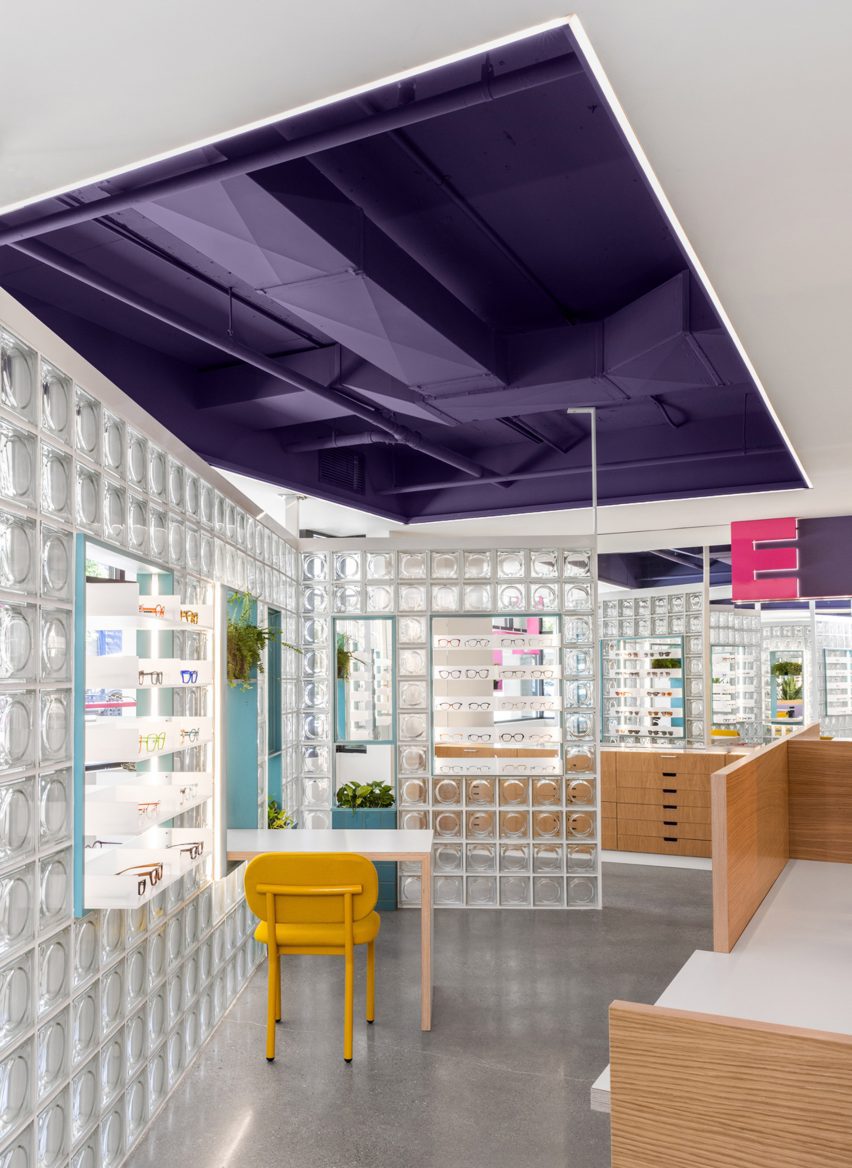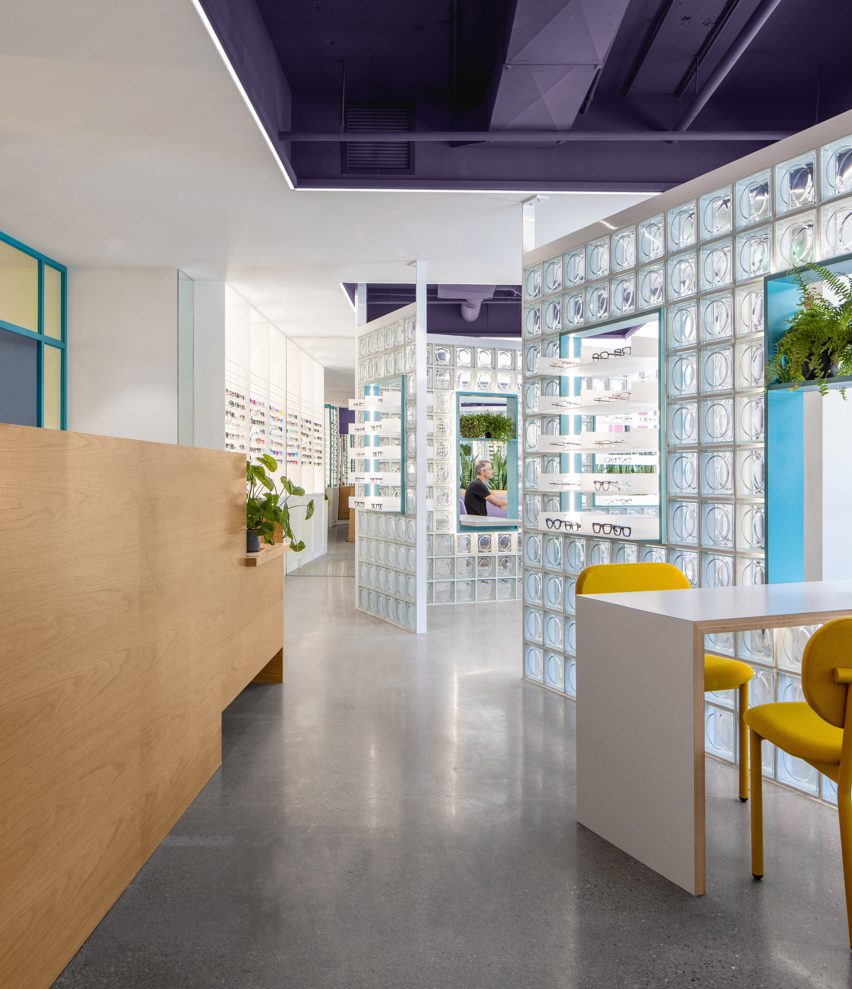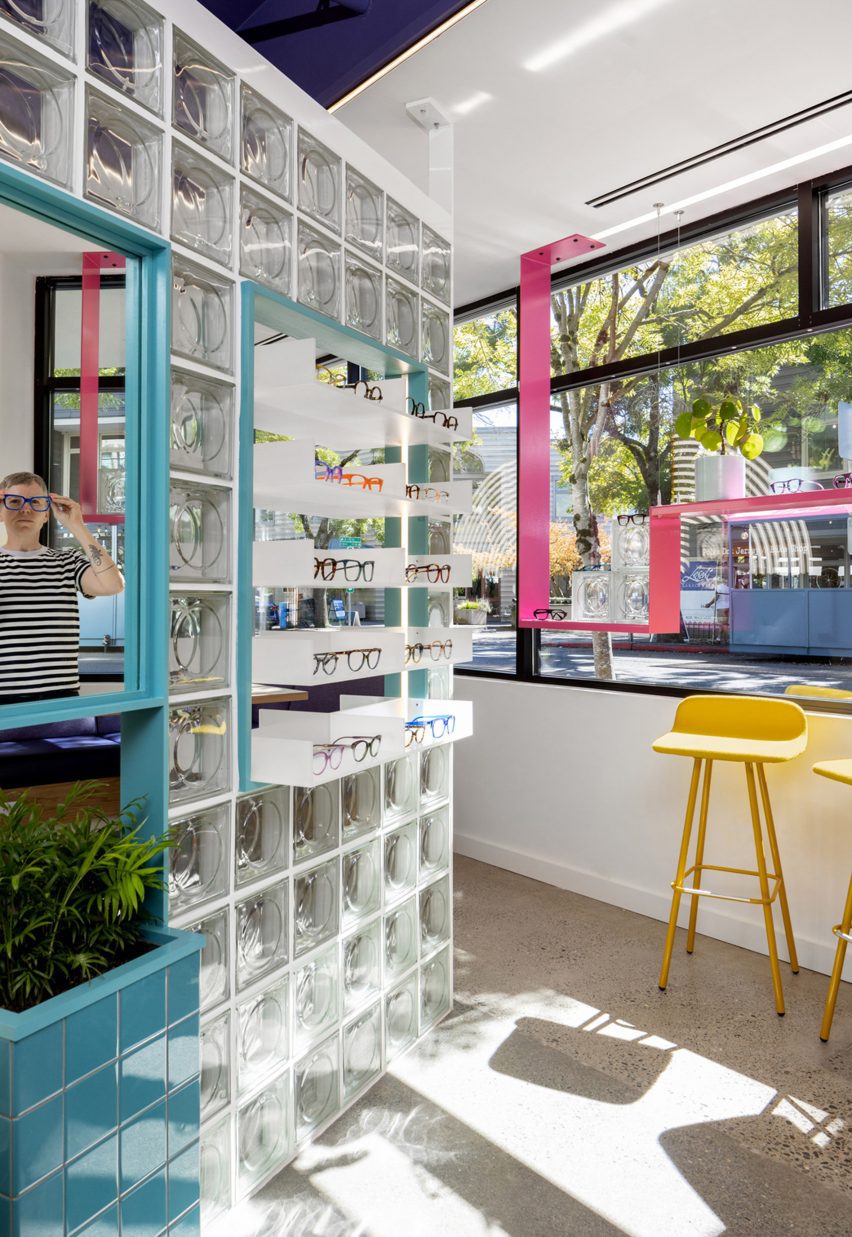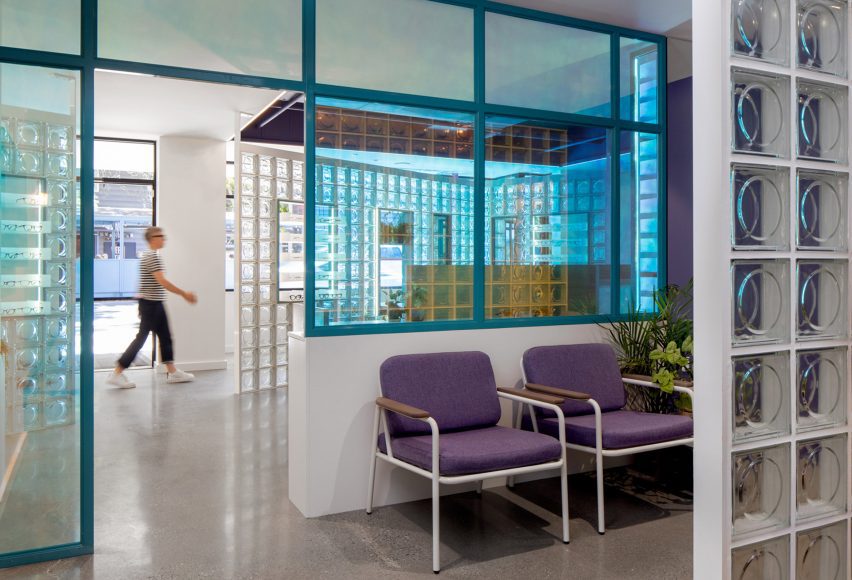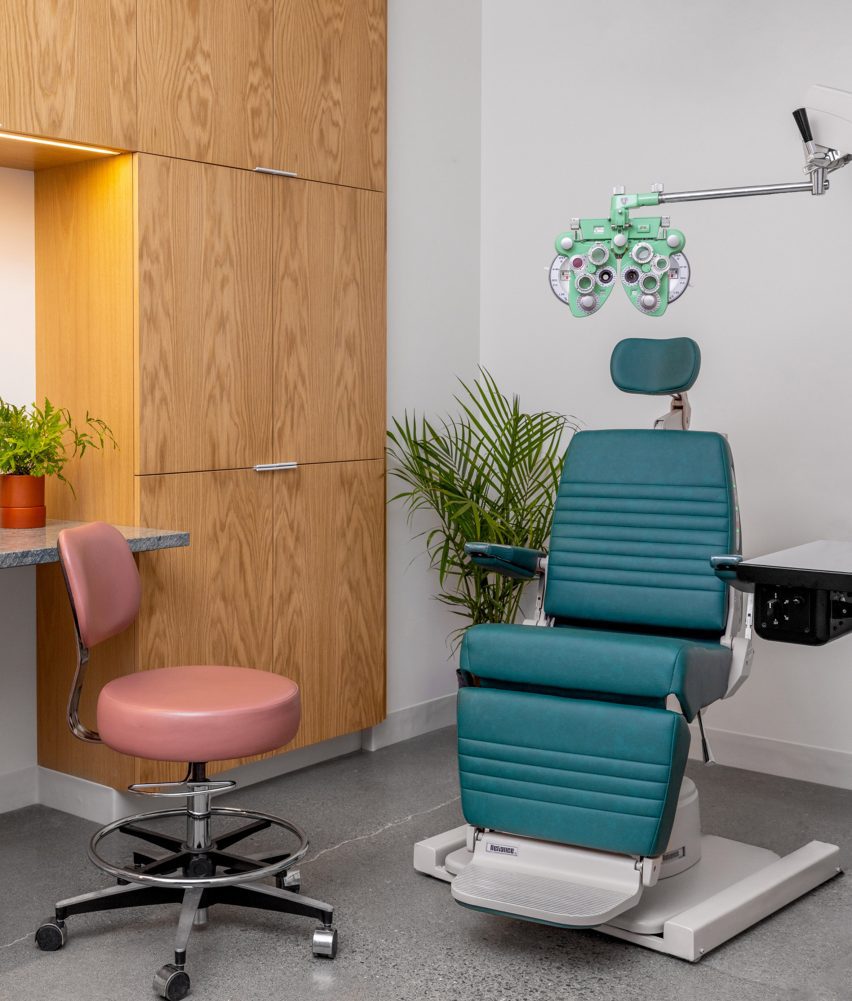Neuhäusl Hunal divide open-plan apartment using curved glass walls
Czech architecture studio Neuhäusl Hunal has renovated a prefabricated apartment in Prague, turning it into an open-plan home and workspace for sculptor and glassworker Vladimír Bachorík.
Neuhäusl Hunal opted for curved translucent glass partitions in place of doors to divide the interior spaces and create a sense of openness and fluidity.
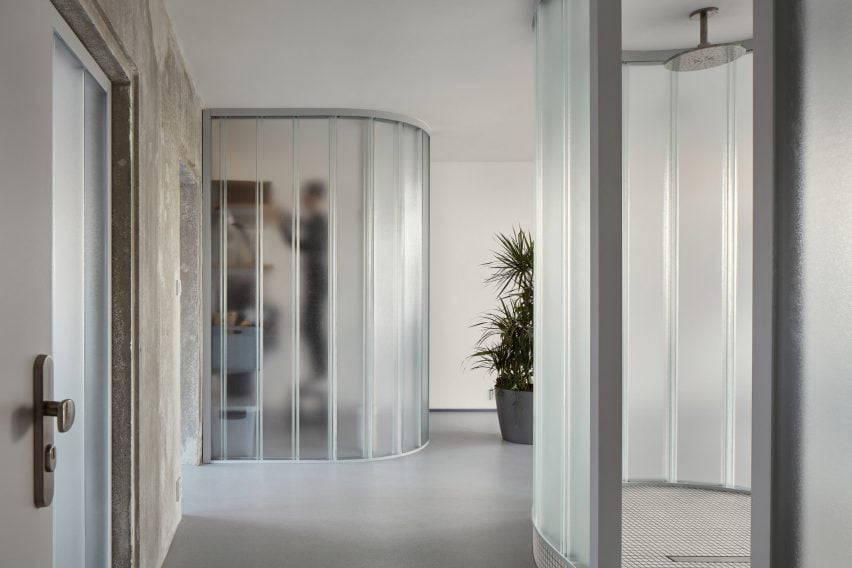

In order to maximise floor space, the studio removed all non-load-bearing elements, leaving just a single load-bearing concrete wall that cuts through the living and workspaces.
Three U-profiled glass partitions were then used to enclose a cloakroom, storage space and kitchen, while the remaining floor space can be used flexibly.
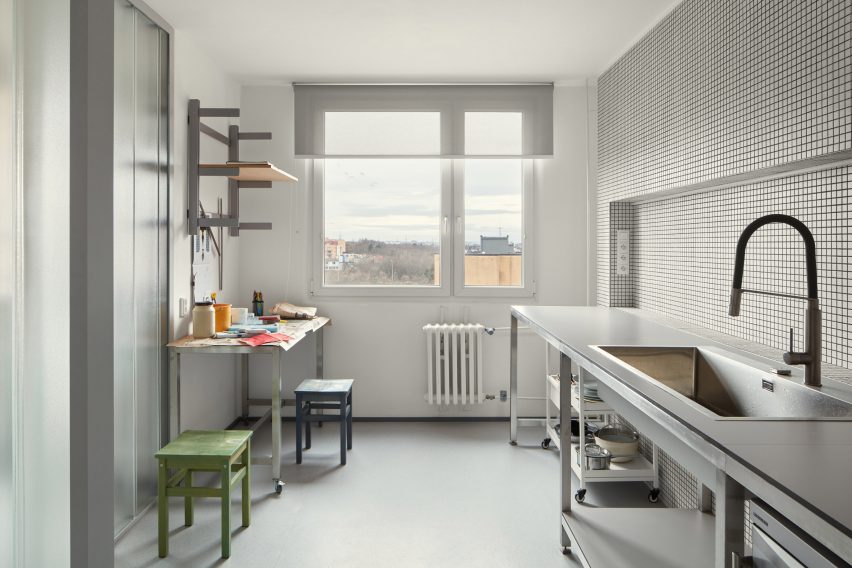

A centralised, curved bathroom, raised by a small platform for waste management, is similarly enclosed by translucent glass panels and protrudes into the main space.
The bathroom interior was lined extensively with white ceramic tiles and features a walk-in shower.
Meanwhile, matching ceramic tiles were also used in the kitchen, which doubles as a work area for the artist.
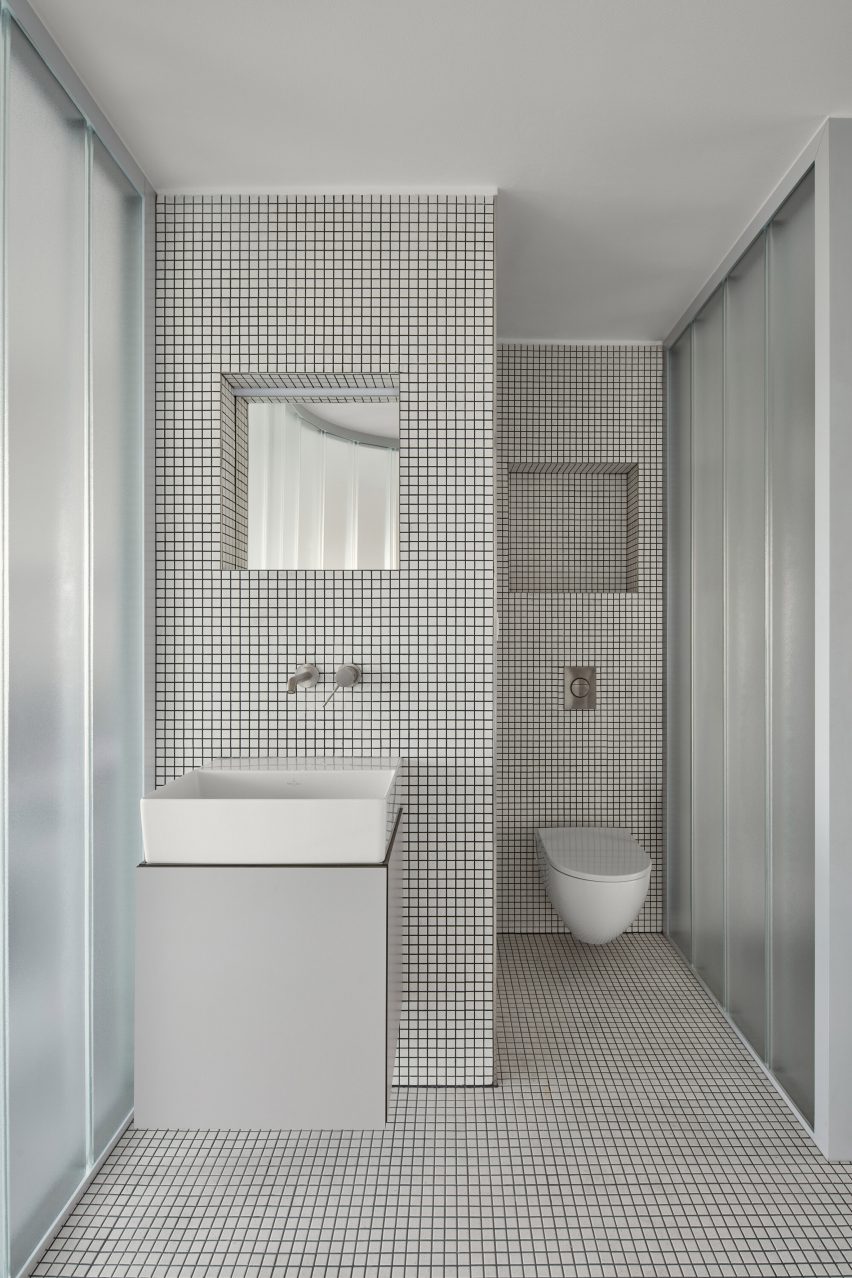

“To design the maximally open and flowing space without doors, infrastructure, besides statics, was a key constraint, which defines the location of the single-almost-enclosed space: the bathroom,” studio architect and founder David Neuhäusl told Dezeen.
“Therefore we emphasized [the bathroom] as the most prominent element in the apartment to create a strong spatial experience,” Neuhäusl continued.
The interior material palette was defined by the stripped concrete wall as well as the translucent panels and ceramic tiles, set on a background of white plaster walls and grey-toned rubber flooring.
Metal furniture and shelving was used throughout the minimalist interior, with cubic plinths used to display Bachorík’s glasswork around the space.
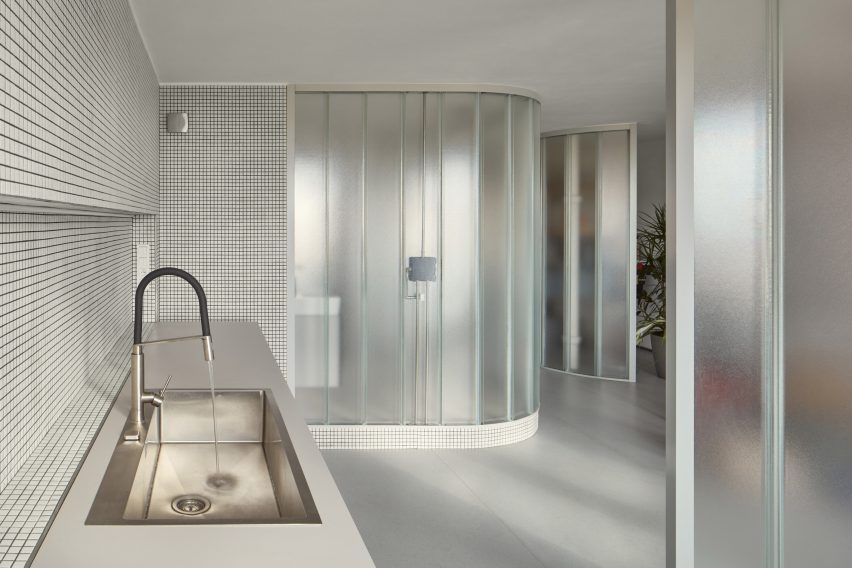

Daylight shines through the existing windows at either end of the apartment and penetrates the glass partitions to create a brightly lit interior, while carefully positioned strip lights and spotlights provide artificial lighting.
“These translucent glass blocks of high order ensure the penetration of light and create identity of the apartment,” Neuhäusl explained.
“Their materiality and character naturally refer to the client’s lifelong work. They can be naturally composed in curves to formulate the softly shaped partitions.”
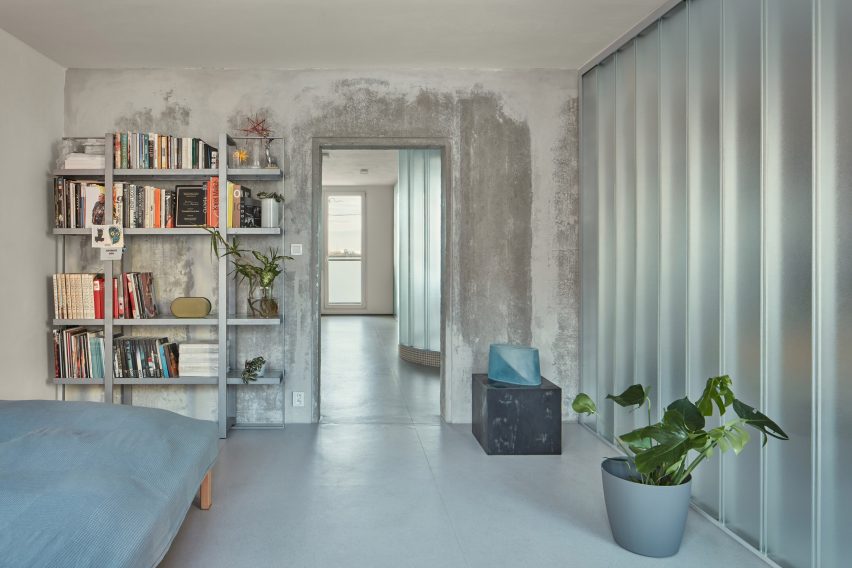

Neuhäusl Hunal is an architecture studio founded by David Neuhäusl and Matěj Hunal in the Czech Republic.
Other projects recently completed in the Czech Republic include a winery topped with a sweeping concrete roof and an angular black extension to a neo-gothic church.
The photography is by Radek Úlehla.

